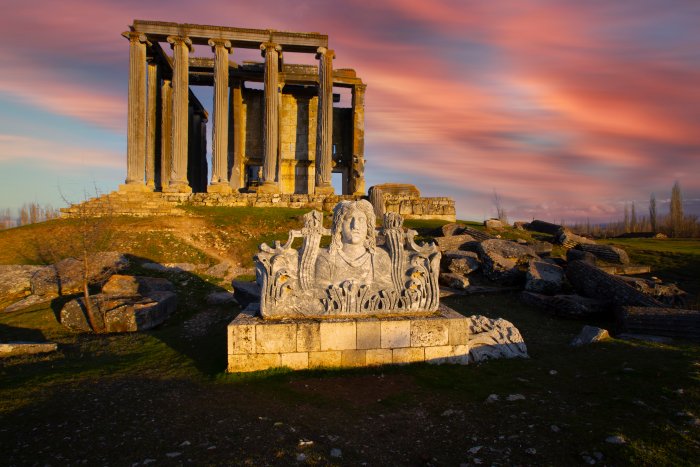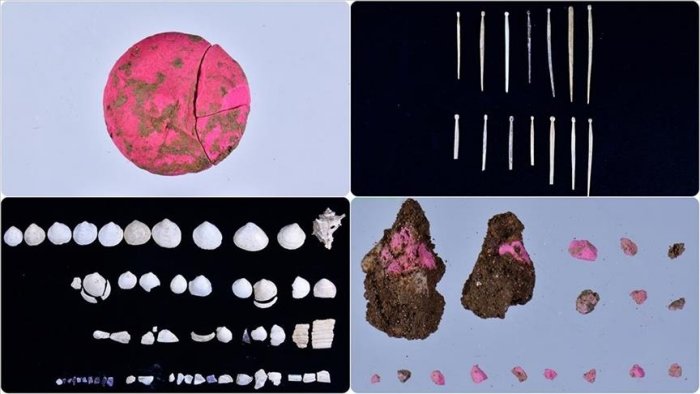Jan Bartek – AncientPages.com – Archaeologists have unearthed a Roman cosmetics shop in the marketplace in the ancient city of Aizanoi, Turkey.
Famous for its well-preserved temple of Zeus, the city of Aizanoi was part of the Roman province of Phrygia Pacatiana. Nicknamed the Second Ephesus, Aizanoi was once an ancient Greek city and an important political and economic center during Roman times.

The ancient city of Aizanoi. Credit: Adobe Stock – Samet
The city may have derived its name from Azan, one of three sons of Arcas and the nymph Erato, legendary ancestors of the Phrygians.
Archaeologists have made several remarkable discoveries while excavating the ancient city. During previous works, scientists unearthed Greek Gods’ heads, including a completely preserved life-sized man statue. “This statue is almost the only intact statue we have found so far,” archeologists said.
Some years ago, scientists found an ancient oil lamp shop as well as a bone workshop in the 5,000-year-old city of Aizanoi.
The recent archaeological find proves people have long appreciated cosmetics. While investigating the agora (marketplace) to the east of the Temple of Zeus, researchers found remnants of cosmetic products, including jewelry items and makeup materials, used by Roman women more than 2,000 years ago.
“During excavations, the team discovered various inscriptions providing insights into the establishment and operation of the ancient shops, shedding light on the city’s commercial and social structure,” the Anadolu Agency reports.
“We determined that the place we completely uncovered was a shop that sold cosmetic products such as perfumes, jewelry and makeup materials. During the excavation here, we encountered a large number of perfume bottles.
In addition to these, there are jewelry items. Among these, there are various beads belonging to products such as hairpins and necklaces used by women,” Gokhan Coskun, an archaeologist at Dumlupinar University and head of the excavation told the Anadolu Agency.
Coskun confirmed that the remnants were makeup materials Roman women used.

Makeup products used by ancient Roman women found in the ancient city of Aizanoi. Credit: Anadolu Agency
“Detailing the types of materials uncovered, Coskun said: “One of the most surprising findings was that we came across were makeup pigments similar to blush and eyeshadow used today. Of course, they are not in a very well-preserved state. Sometimes they are found in 1 or 2-millimeter (0.04-inch) pieces. We also found well-preserved pieces during the excavation.”
Noting that in the Roman Empire, makeup materials such as blush and eyeshadow were often placed inside oyster shells and used, he said. “We also encountered a large number of oyster shells in the shop we excavated.”
Coskun emphasized that the predominant colors discovered were red and pink, with makeup pigments found in 10 different hues,” AA reports.
See also: More Archaeology News
Ancient Romans drew inspiration for using makeup from the Greeks and Egyptians. In the beginning, cosmetics were mainly used for rituals, but later, when Romans understood makeup could enhance beauty and look, it became a crucial aspect of the lives of ancient Roman women.
Written by Jan Bartek – AncientPages.com Staff Writer





